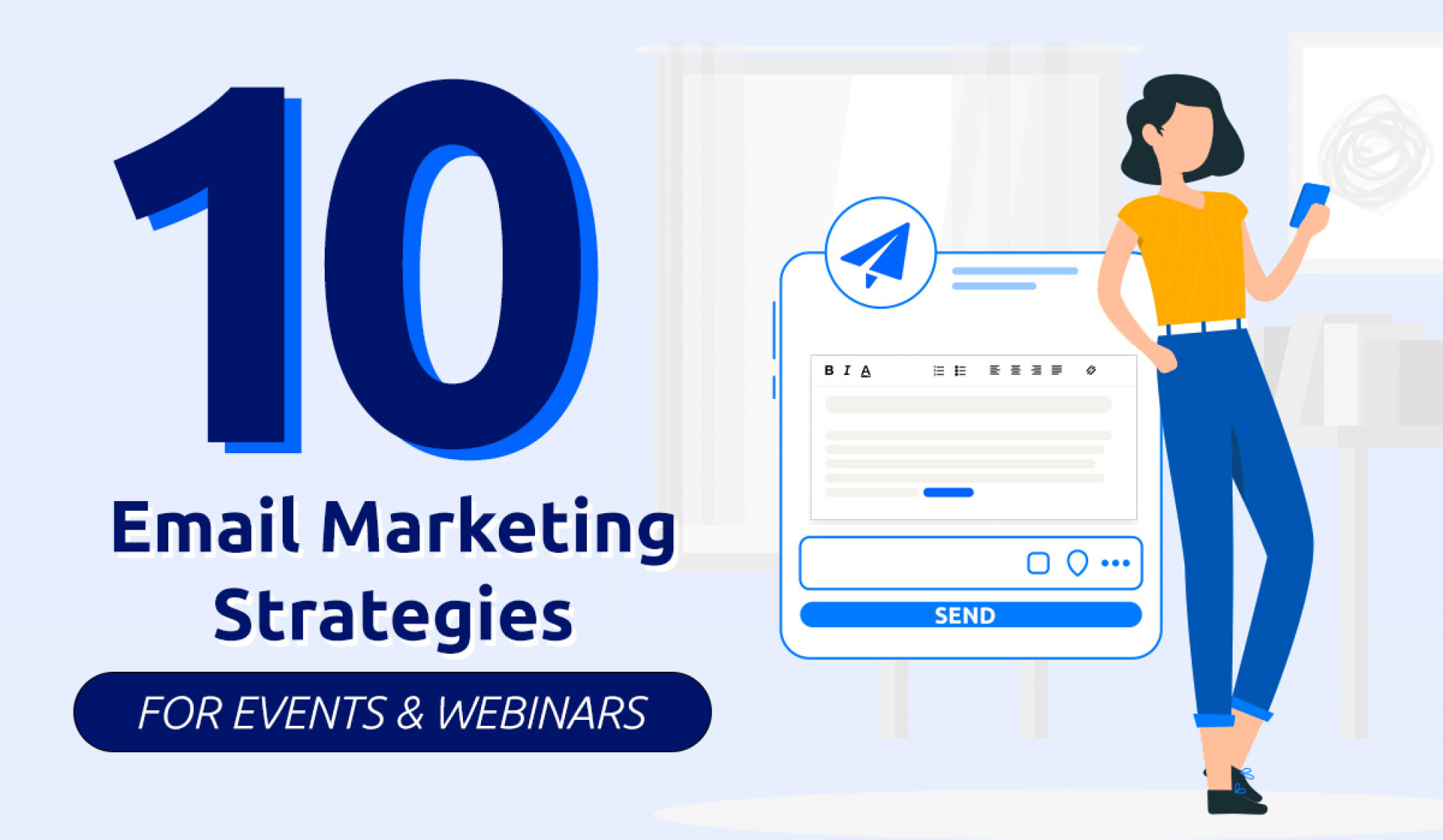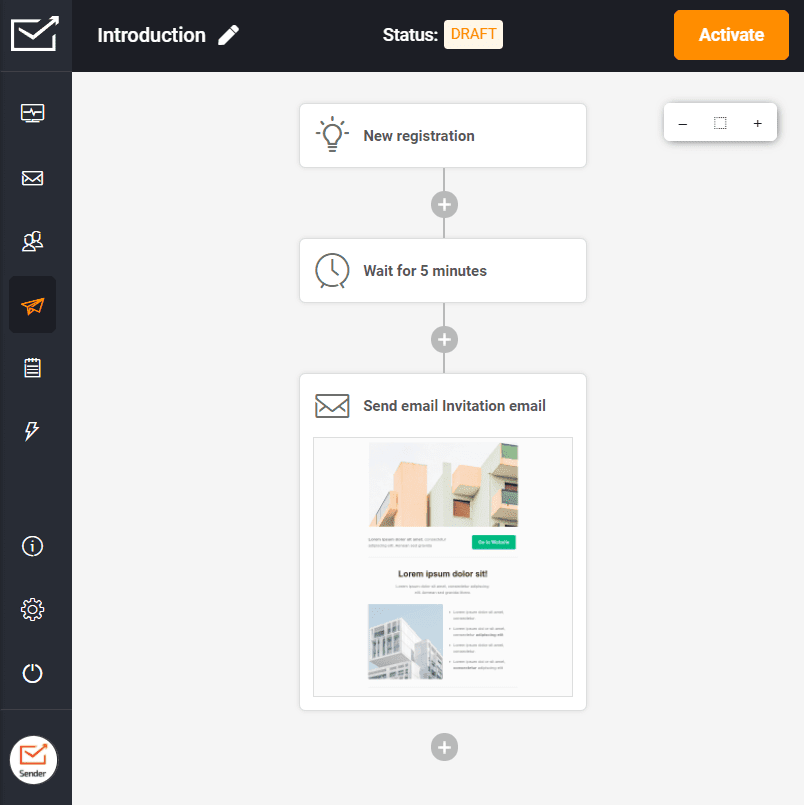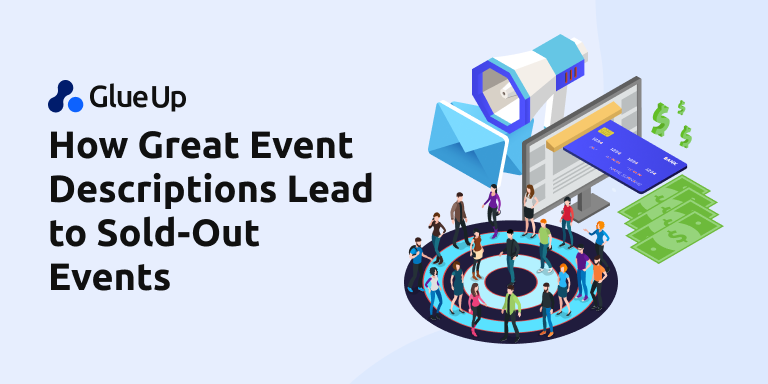
Marketers across the business world have been using webinars for the past three decades. This may sound like we are all familiar with the term. Right?
There has been a thin line between webinars and virtual events. Although webinars are events in their way, online events cover much more than offering content.
In webinars, the presenters interact and collaborate with the attendees intimately in a learning setting between 60 to 90 minutes. As a result, they help you generate new leads and enhance a healthy relationship with existing customers.
On the other hand, virtual events provide multiple sessions and components over a longer period. This can include conferences, product launches, and tutorials.
Email marketing is essential for the success of both webinars and online events. Therefore, you must know the best email marketing strategies to employ and get more people to sign up and attend.
Quick Reads
- Best Digital Marketing Tactics for Online Events and Webinars
- Highlight The Speaker
- Target the Right Audience
- Have an Easy Sign Up Process
- Send Your Attendee Invitation Reminder
- Add Testimonials to Your Emails
- Provide Early Bird Deals
- Do Promotions the Right Way
- Send Last-Minute Invitation Emails
- Use Consistent Color Plan
- Include Value-Adding Videos
Best Digital Marketing Tactics for Online Events and Webinars
1. Highlight The Speaker
Leveraging the speakers in your email is critical in inspiring your customers. Include their names and photos and use this to your advantage. For large online events, most speakers are well-known, and hence you only need to list them. However, in small events such as webinars, you must emphasize the main speaker's personality and background to validate the recipient's attendance.
Moreover, you can request your speakers to support you by influencing their email list as well. It might call for trust-building for speakers to give access to their lists to first-timers, but you'll eventually breakthrough.
2. Target the Right Audience
Consider your recipient's profile and interests to avoid spamming your customers. This strategy is suitable in the case of a webinar.
So, ensure it's appealing to the target group in the middle of their current stage in the sales funnel. In addition, the topic of discussion should be in line with the audience's decision-making stage.
For instance, if you're selling an online learning program for a hundred attendees, you should build a relevant list and send out automated personalized emails.
If you have external speakers, request them to invite attendees on their end to increase your audience. You may even ask them to provide some offers like free ebooks or discounted tickets.
Even though you have goals to achieve, put more focus on the satisfaction of your target audience, and as a result, you'll attain personal objectives.
3. Have an Easy Sign Up Process
Sign up process is the main part of your email marketing. Therefore, make it as easy as possible for your audience to register for your virtual event or webinar.
To inspire more sign-ups, create a clear and compelling CTA button. It should be outstanding from the rest of the email with a straightforward command (e.g., Secure a seat) and lead to an appropriate target link (e.g., a webinar landing page).

Here are popup created using Sender.net
Also, to ensure you get genuine leads, make sure to validate every new sign-up in real time by using an email validation API or a Javascript email validation at the entry point in your forms or landing pages. People can make typos or use disposable email addresses, so it pays to check incoming leads right away.
4. Send Your Attendee Invitation Reminder
You can send an email in intervals a few days prior to the due date and another reminder a day before the event/ webinar.
We recommend using the Sender.net platform, which lets you create and send automated invitation emails, reminders to your email list. Also this tool gives pop-up forms and embedded signup forms, which you can add to your website and promote your webinar.

Pro tip. Be sure to include an attractive CTA too to increase the likelihood of a high sign-up rate.
5. Add Testimonials to Your Emails
Testimonials enhance your credibility and trust among your audience by eliminating doubts that could arise. Showing recipients how other people have benefited from similar events/webinars builds their confidence and encourages them to attend.
Below are some guidelines for using testimonials the right way:
- Include one or two of them per email
- Don't use businesses, but people and, if possible, known to the recipient
- If you have their words, quote them
- Incorporate their photos
- Use email signatures to market your events and add links to testimonials
In a nutshell, testimonials should be from people with an experience of a similar event/webinar in the past. If you are a first-time host, use a testimonial of a person you have worked with before.
6. Provide Early Bird Deals
These offers focus on advertising how much your audience can save by making early payments. Offering discounted prices enables you to cut on the event/webinar overhead costs and increase profits.
Alternatively, you can provide sensible bonuses such as giveaway bags or freebies to early-bird attendees to make them know that you value them. Make the offers attractive and convincing enough to avoid the risk of a low turnout leading to decreased ROI. Also, do a follow-up sequence to encourage more registrations.
7. Do Promotions the Right Way
You have to market your online event/webinar for people to attend. Then, with the help of your email list and blogs, you can emphasize the online event/webinar and conclude with a CTA triggering the recipients' registration.
However, while mentioning such events in regular newsletters is a great idea, sending dedicated emails for Instant communication is more influential. Go through each of your touchpoints and single out the most effective in boosting turnout.
8. Send Last-Minute Invitation Emails
Some of your original invitation emails could have been left unread or with no action taken. In such a case, sending a secondary invitation email is a great idea.
This enables you to follow up on any loss leads and not lose any potential sign up. To subdivide your list, segment it into those who signed and those that didn't. Send inspiring emails to those who didn't sign up and request them to register for the event/webinar.
Moreover, use time-sensitive words like "only x hours remaining" or "last chance" to create a sense of urgency and push your audience to register.
9. Use Consistent Color Plan
This design principle is essential for online and webinar email marketing campaigns. To give your brand a spotlight, have a consistent color scheme with white space to attract the readers.
Also, the design quickly directs the audience to the CTA, and they can pick the most important details.
10. Include Value-Adding Videos
You can use informative videos as bait for signing up, thus increasing the attendance. This is necessary for drawing the recipient's attention. You can begin with the sign up option, which will give the audience access to the value-adding video.
It should provide insight into the forthcoming event or webinar, thus inspiring your recipients to register and get more information.
Applying Email Marketing Strategies to Promote Your Online Events and Webinars
Marketing your events and webinar online is crucial in boosting registration and attendance. For this reason, you need to employ the best digital marketing strategies to achieve these goals and also attain some good returns.
Author Bio
Skirmantas Venckus is a writer by day and reader by night. He hates talking about himself in the third person. He is also the growth hacker at Sender.net – the email marketing provider that is focused on user-friendliness, affordability, and utility.



